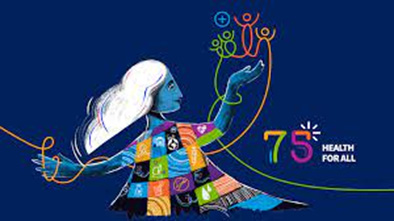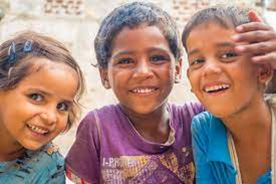Celebrating Health for All this World Health Day
April 6, 2023 | Contributed by Vidushi Sharma
Universal access to health should be a basic right of every human being. The World Health Organisation (WHO) has been working relentlessly towards universal health coverage, making sure that everyone gets the care they require, when they require it, in the very centre of the community. We have come a long way but still have a lot of ground to cover. Many people still do not have access to basic healthcare where they are compelled to choose between paying for their health care and other everyday expenses like food, clothing, and children’s education. When this choice must be made to allow a child to obtain medical care, it is genuinely sad.
 On it’s 75th birthday, WHO fiscus in the challenges in health care through #HealthforAll
On it’s 75th birthday, WHO fiscus in the challenges in health care through #HealthforAll
Congenital heart defects (CHDs) is one such area. CHDs are anatomic malformation of the heart and great vessels that develop during the intrauterine period, however, age at presentation of CHD may vary. The prevalence of CHD is approximately 0.8% of live births. These are one of the leading birth defects and yet, both awareness and access to quality treatment remain a huge challenge.
The treatment for hole in the heart in infants as well as other types of heart defects depend on the type of defect. Children born with mild defects may need no or limited treatment. However, children born with critical defects will need a surgery to remain alive. In India, most treatment options are available in private facilities where the cost of treatment varies between Rs 1.5- 5 lakhs. For families that struggle to make even Rs 20,000 a month this is an unimaginable cost of treatment. Free heart surgery for children in India is available only in a few places and very often the waiting period is too long.
Lack of Awareness and other Challenges:
CHDs can be caused by a combination of risk factors such as environmental exposures and maternal conditions. Because the heart is formed in early pregnancy, the damage may occur before women know that they are pregnant. Maternal diabetes, obesity, smoking and some infections raise the risk of the baby having CHD. Research published in the National Library of Medicine says that parents of children with CHD have significant knowledge gaps regarding their child’s condition and management. It suggests that the current patient counselling is inadequate and needs special focus, especially in developing countries, to promote parents understanding of the prenatal cardiac diagnosis. Early prenatal diagnosis, follow up and compliance with the physician’s advice are some of the ways this problem can be tackled.
As the Journal of Thoracic and Cardiovascular Surgery suggests, there is a positive correlation between a nation’s economic status and access to cardiac surgery. Hence, there is a need to increase human and physical resources, while focusing on safety, quality, and efficiency to improve access to cardiac surgery for billions of people without.
 Many children still do not have access to life saving treatment
Many children still do not have access to life saving treatment
The Achievements:
Looking back, the treatment for hole in the heart in infants has come a long way. We have also come quite far with three major revolutionary innovations and paradigm shifts in CHD interventions over the last half-century. These innovations are the heart-lung (cardiopulmonary bypass) machine, neonatal cardiac surgery and transcatheter therapy. There are multiple evolving areas of expertise that will potentially shape the congenital cardiovascular specialty over the next half-century
The Prospects:
The first is the creation of the adult congenital heart disease subspecialty. With up to 90 percent of CHD patients surviving to adulthood in the current era, well-coordinated specialized multidisciplinary care from providers with skills in both pediatric and adult medicine will become critical for the prevention and management of the long-term sequelae of CHD in this population.
Secondly, one of the downstream problems of an aging population with CHD is an increase in the average number of surgical re-interventions in a lifetime, and the need for multiple re-operations in patients with complex anatomy. This will invariably result in an increase in surgical morbidity or mortality or both.
Thirdly, the advances in imaging techniques (CT, MRI, echocardiography) that include 3D imaging and the ability to print models and evaluate anatomy in a virtual environment allow a more thorough preparation for a complex intervention.
Lastly, we will need more organisations that can help with free heart surgery for children in India to make sure that no child is deprived access to a treatment only because they cannot afford it.
On the occasion of World Health Day, this April 7, lets make sure that all people irrespective of age, sex, occupation, receive appropriate health benefits to sustain a longer life and contribute to our economy. There are so many children who are still waiting for basic amenities and healthcare, let’s not disappoint them and help them get the facilities they deserve.

